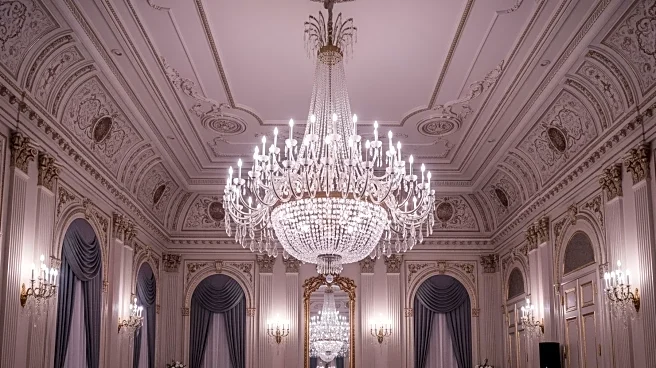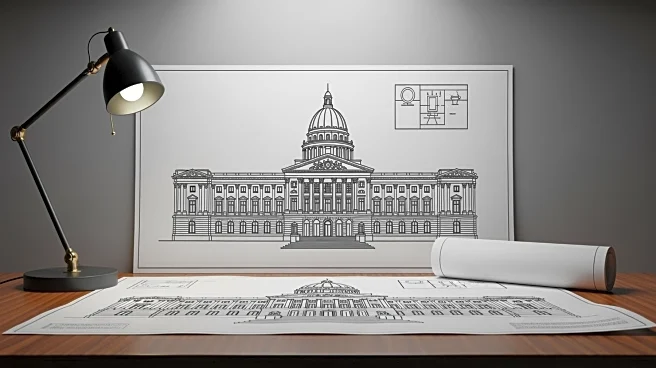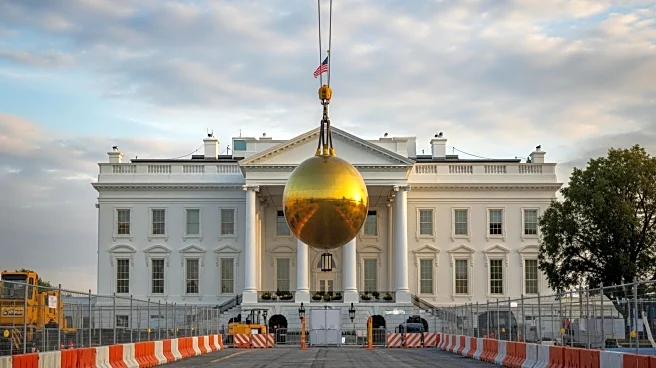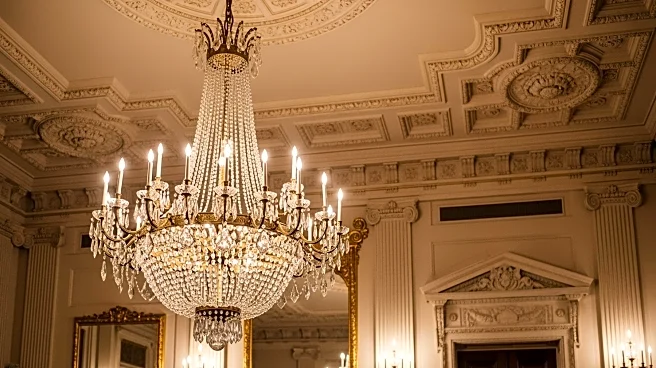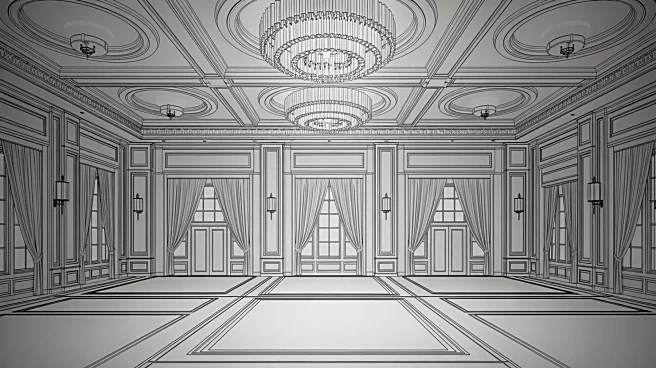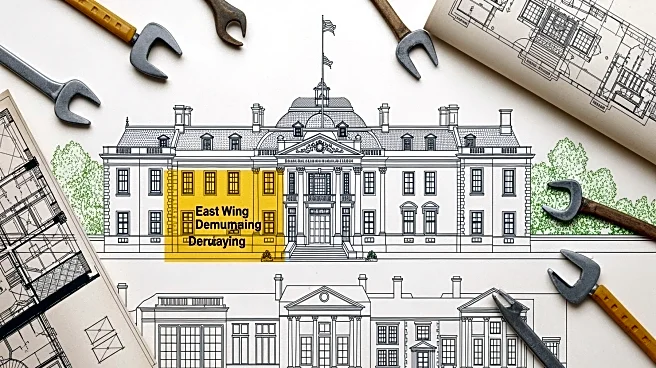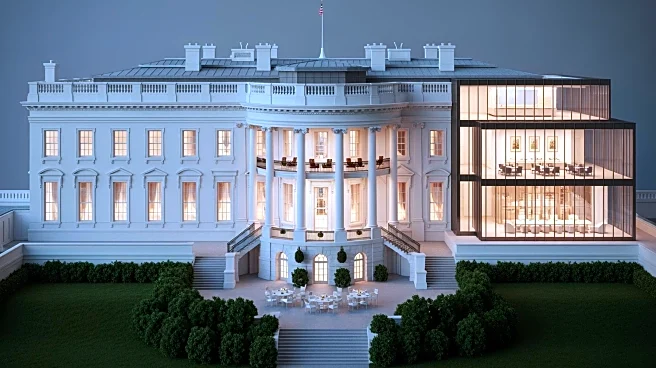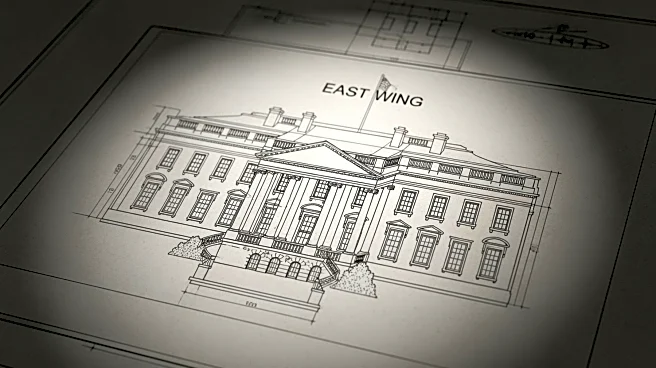What's Happening?
The White House has confirmed plans to demolish the entire East Wing to make way for a new $300 million ballroom. This announcement follows the release of satellite images showing the East Wing reduced to rubble. President Trump has stated that the new ballroom is part
of a broader vision for enhancing the White House's functionality for official events. The demolition marks a significant change to the White House's structure, which has historically been preserved with minimal alterations.
Why It's Important?
The construction of a new ballroom at the White House is a notable development, as it involves substantial financial investment and structural changes to a national landmark. This project may influence how the White House is utilized for state functions and could set a precedent for future renovations. The decision to proceed with such a costly project may be scrutinized in light of other national priorities and budgetary constraints. The public and political leaders may debate the necessity and timing of this renovation.
What's Next?
As the project moves forward, there will likely be increased scrutiny from both political and public spheres. Oversight committees may evaluate the project's budget and timeline to ensure fiscal responsibility. The completion of the new ballroom will be a focal point for future White House events, potentially altering the way diplomatic and state functions are conducted. The project may also prompt discussions about the preservation of historical sites and the balance between modernization and maintaining heritage.
Beyond the Headlines
The demolition and reconstruction of parts of the White House could lead to broader discussions about the preservation of historical landmarks. The White House serves as a symbol of American history and governance, and changes to its structure may evoke strong opinions about maintaining its historical integrity. This project may also highlight the challenges of updating historical sites to meet contemporary needs while respecting their cultural significance.
